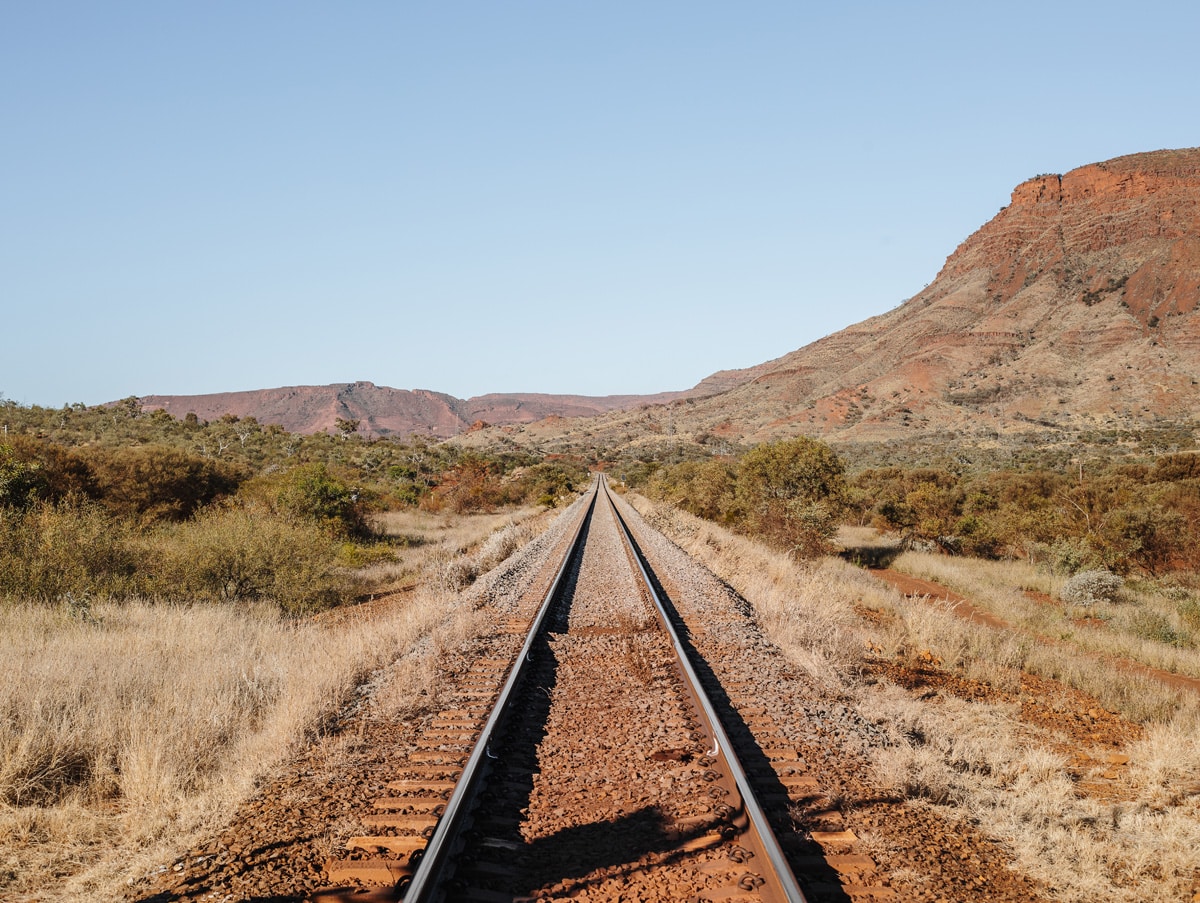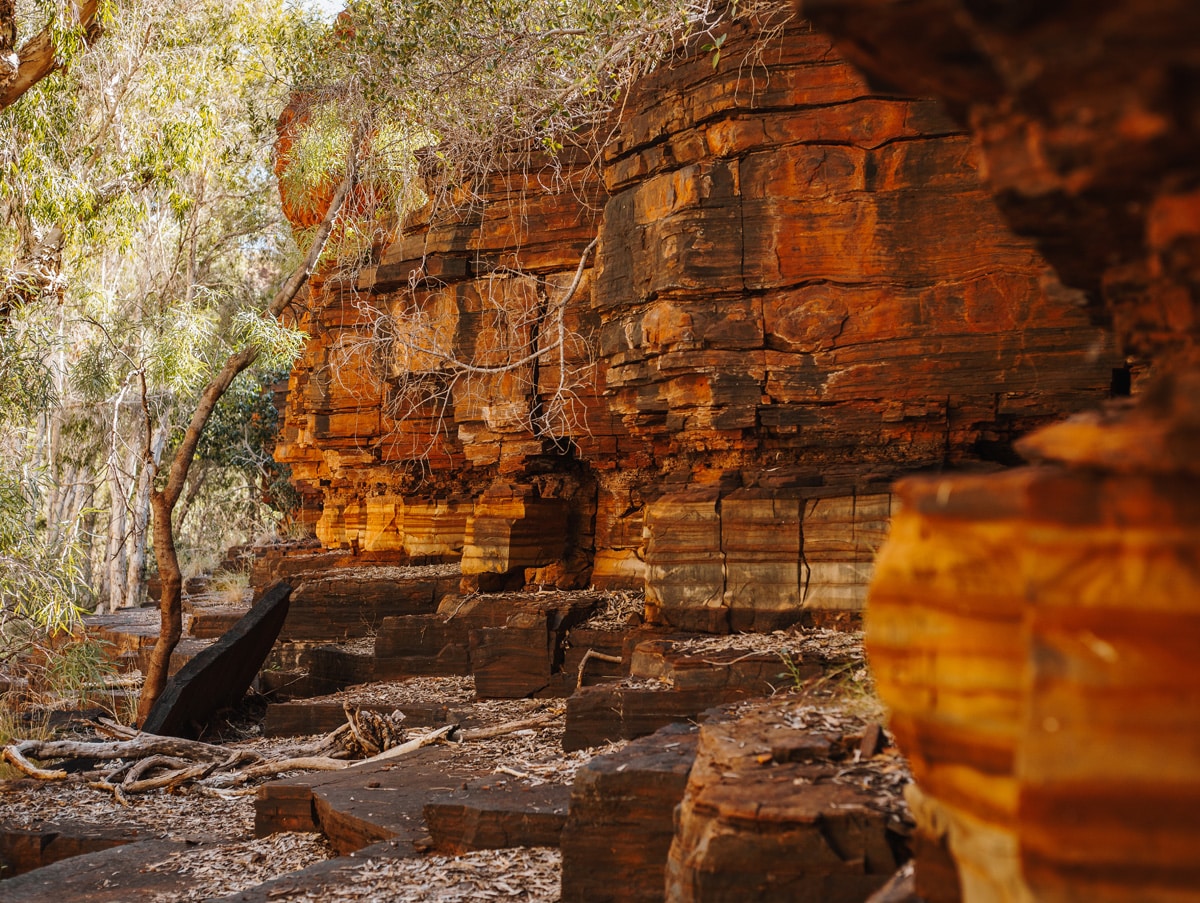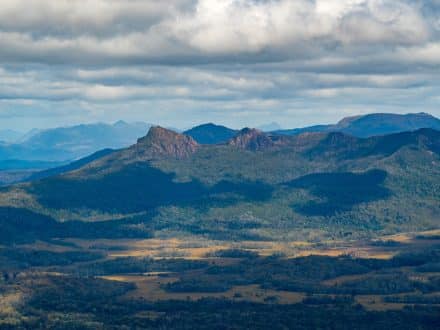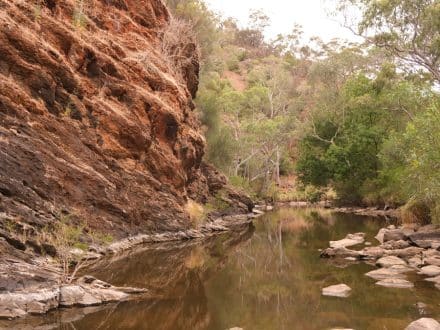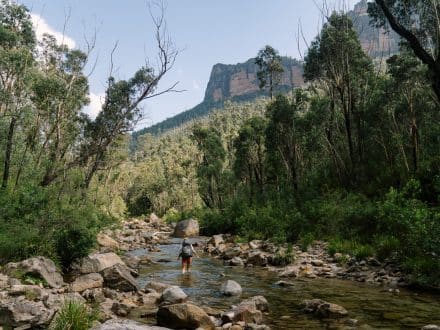With rock walls billions of years old and swimming holes you couldn’t dream up, this corner of the Pilbara is a stunning oasis in one of the most isolated places on earth.
Featuring the striking reds iconic to the Australian Outback along with deep gorges and natural swimming pools, a trip to Karijini National Park is well worth the trek inland and serves as a spectacular counterpoint to the jewelled beaches of the north-west coast. About 60 kilometres from the nearest town, visitors should bring plenty of water, a full jerry can, and clothes that might be improved by a permanent red dirt tie-dye design. Karijini is the second largest national park in Western Australia at 627,422 hectares. Although its many scenic hikes and overlooks are best explored over several days, in a little over four kilometres the Dales Gorge Loop Trail covers some of the park’s most spectacular scenery.
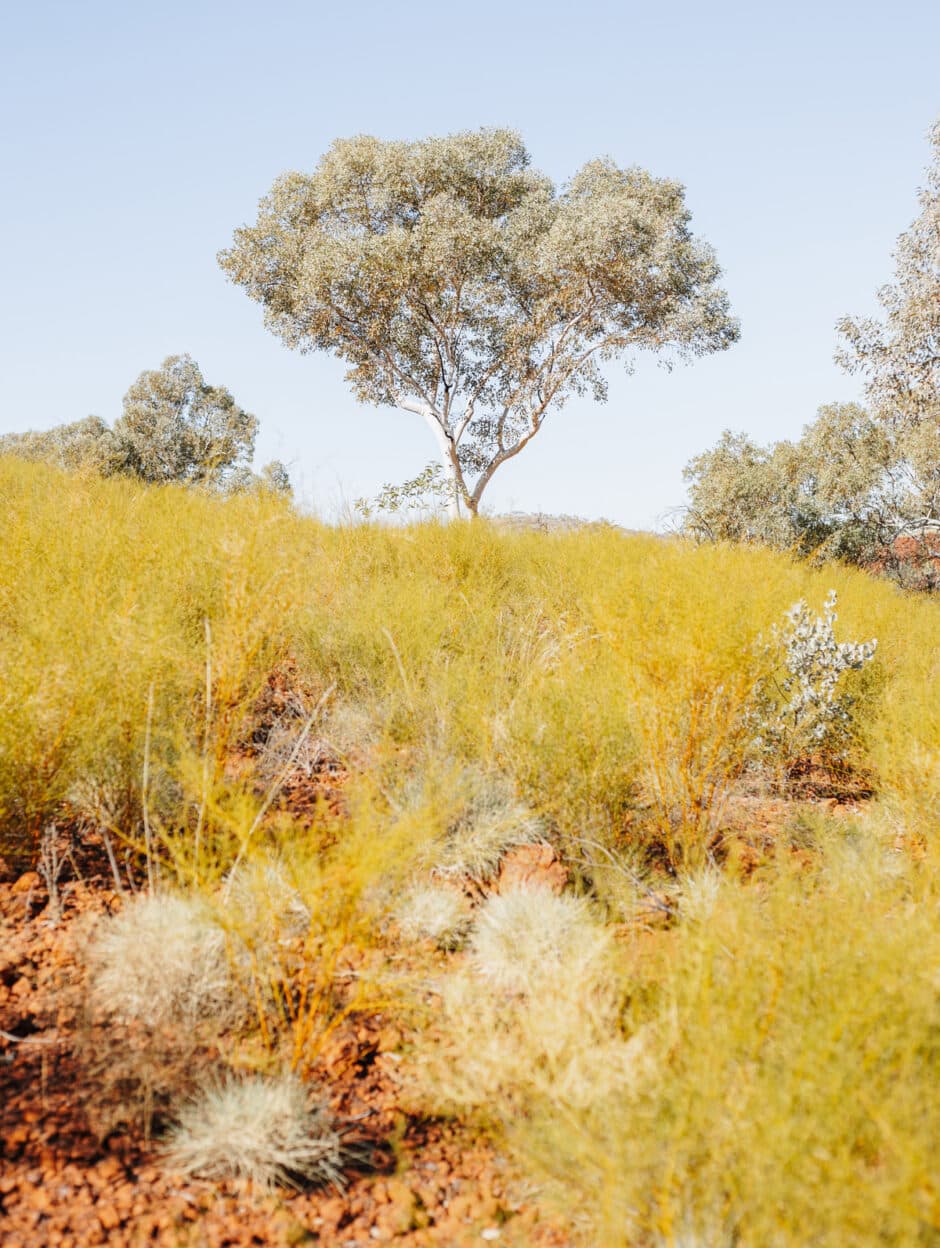
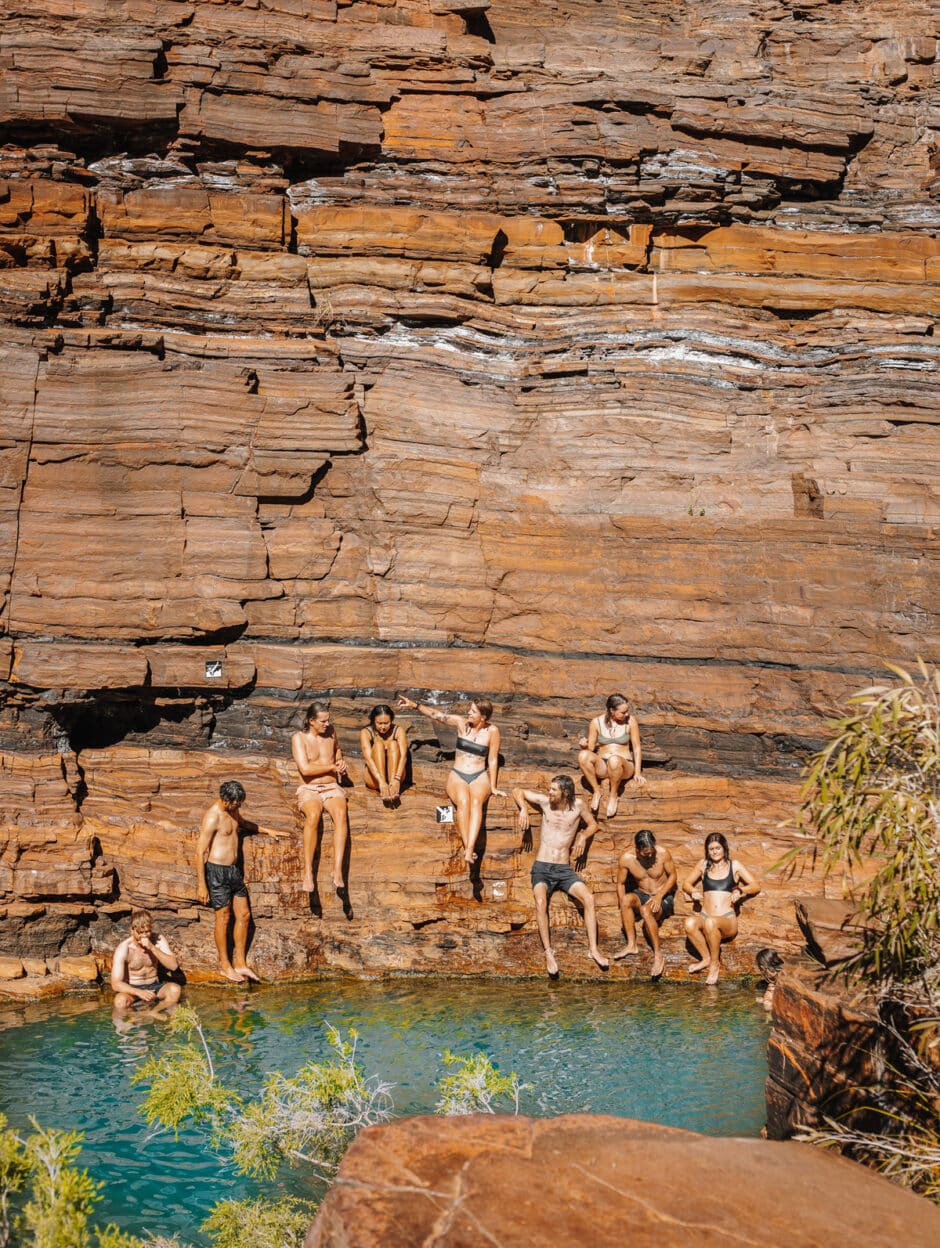
In the early hours of the day, a soft light saturates the rust- coloured path, contrasting the cloudless sky. Grassy bushes dot the ground, their typical pallor enriched by the warm rays. Slender, milky-white gum trees interrupt the horizon, balancing thick clusters of leaves on their tallest branches. A short path leads to the Circular Pool Overlook. Tight layers of gorge wall dipped in a cumin and paprika spice blend surround the opaque swimming hole below. This Martian landscape is surprisingly full of life. Emerald-green moss drifts to the edge of the pool, and a dense forest stretches up toward onlookers. Previously available to explore, the trail to Circular Pool is currently closed due to rockslides. Fortunately, this loop offers plenty of other swimming opportunities.
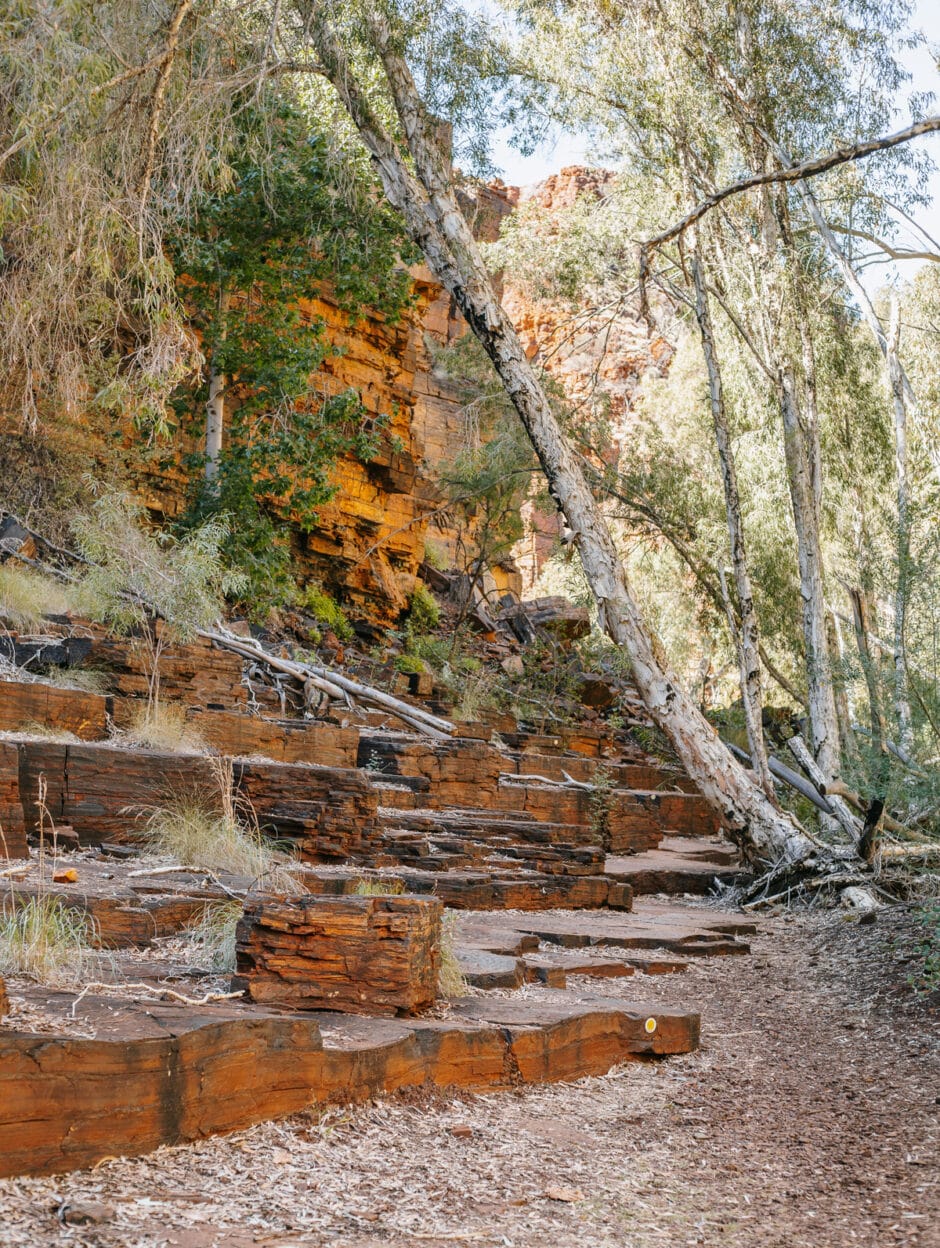
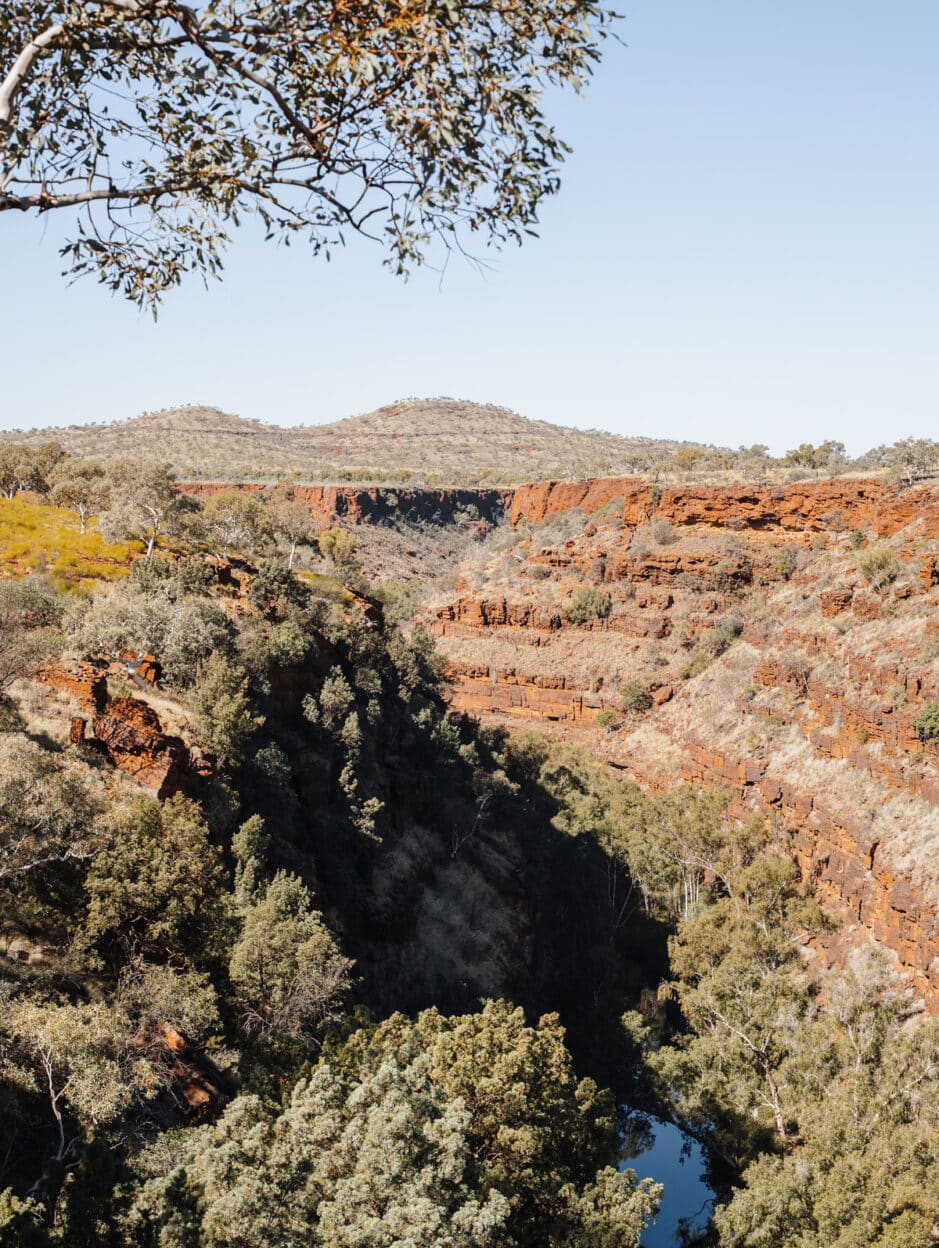
The sheer magnitude of the gorge soon becomes apparent as hikers head along the rim before a sturdy metal staircase leads visitors into its belly. Tufts of grassy spinifex blanket the tops of the wall’s chunky upper rows. The steep rock face is supported by wooded slopes that gradually narrow to form the valley below. The banded stone layers are irregularly stacked but show no sign of toppling. Smooth and cool to the touch, there is a glossiness to the rock as if coated in a clear lacquer that glued it permanently to the spot. De ant snappy gums occasionally protrude from fractures in the wall.
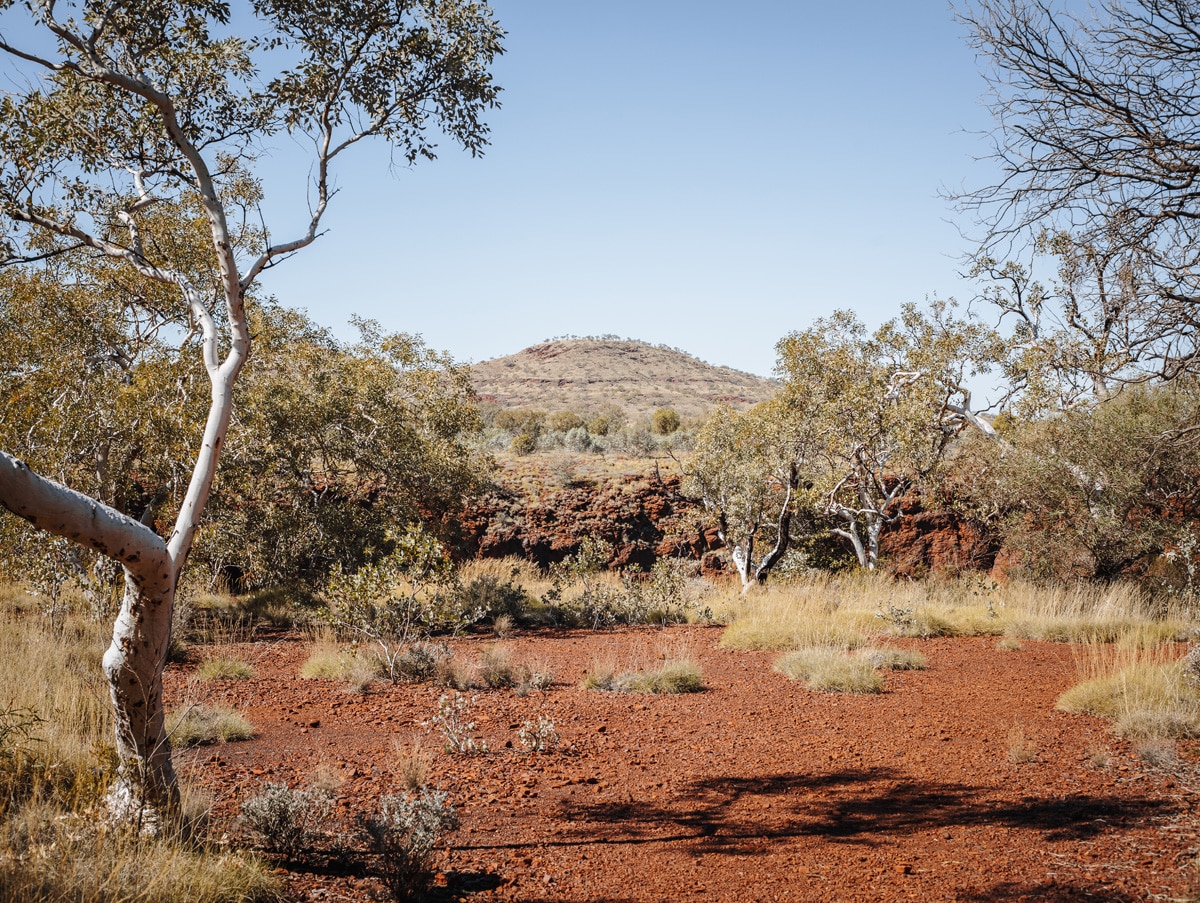
The descent ends with access to Fortescue Falls. Before forging onward, take the 300-metre side trail to Fern Pool. A man-made platform provides easy swimming access. Verdant foliage and a tiny waterfall create the feel of a desert oasis. Don’t let the icy temperature deter you from jumping in – the outback heat will get you sweating again in no time. In the summer months the temperature at Karijini can rise above 40 degrees and visitors are sure to encounter the notoriously relentless outback flies. We visited in early July and were rewarded with comfortably hot, y-free days. Be mindful, however, that at this time of year, campers will be trading in their daytime flynet for extra nighttime layers as winter temperatures can drop as low as 10 degrees once the sun goes down.
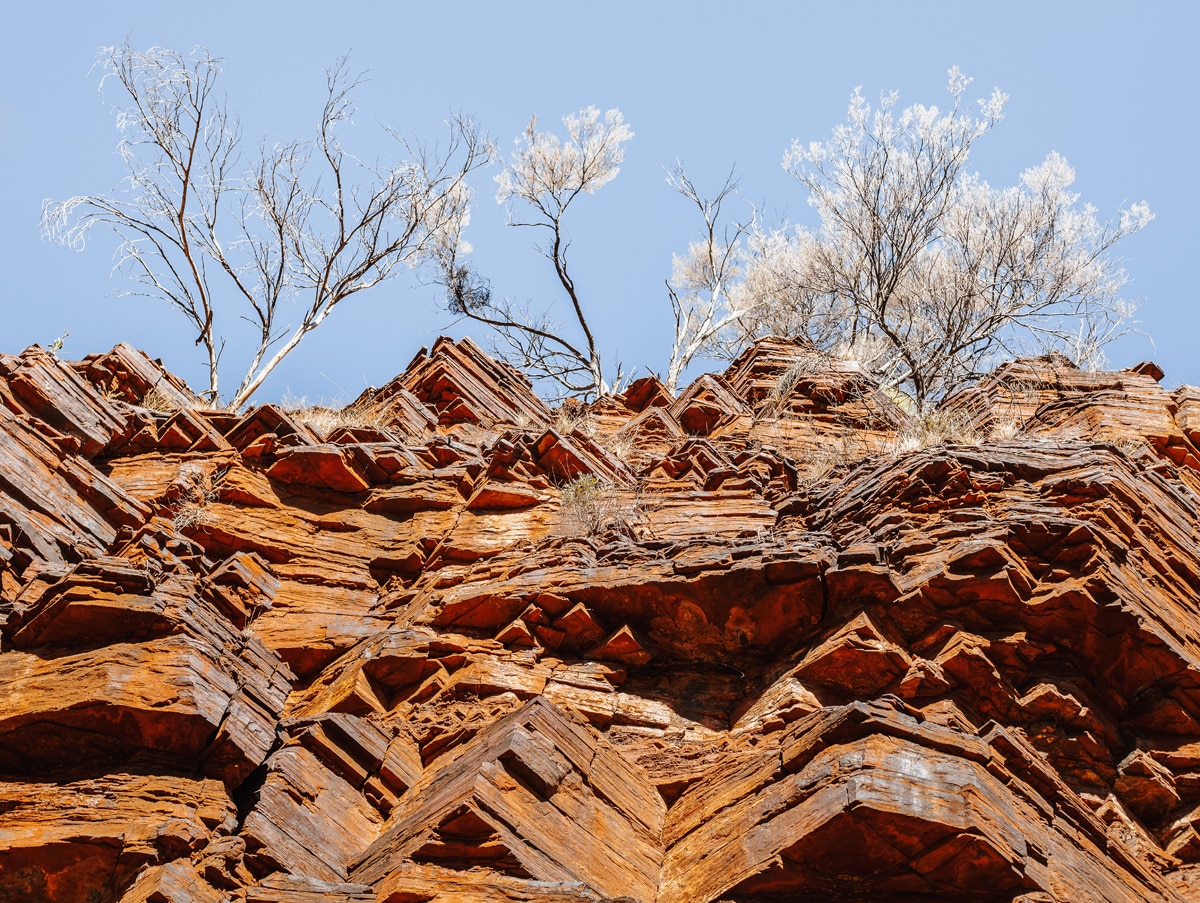
Back at the top of Fortescue Falls, a rapidly brightening sun illuminates the hazy aquamarine pool below – arresting against the terracotta tones of the imposing rock wall. Hikers climb down to the swimming hole alongside the continuously rushing water of this permanent waterfall. Steep and slippery at points, this section is the most challenging of the walk. Take time to relax in the pool, sunbathe on the rocks, or scramble up to ledges on the gorge wall and take in the view from different vantage points.
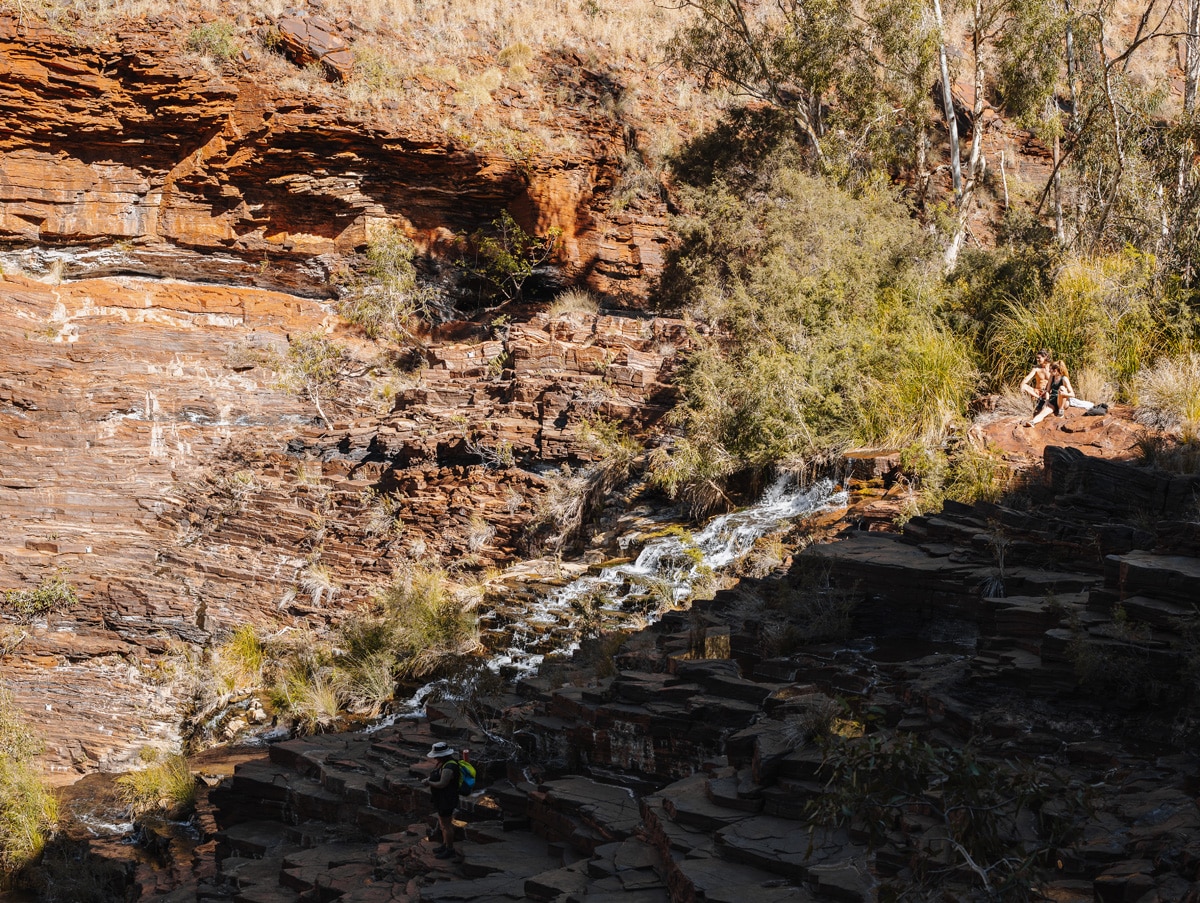
To continue, a shady path lined with eucalyptus and g trees meanders along the gorge wall. Intermittently widening and narrowing, it rejoins the waterway before stepping stones lead back to a dry path. Visitors can take one last opportunity to admire the giant red boulders and piles of square-shaped rubble left behind by this living 2.5-billion-year-old fissure before a second metal staircase ushers them up to the gorge rim.
